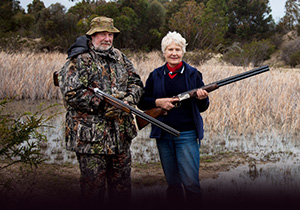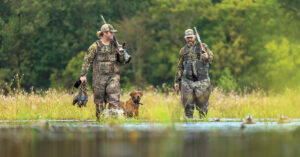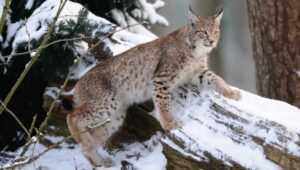Introduction
Definition of hunting as a form of pest control
Hunting as a form of pest control refers to the practice of using hunting techniques and methods to manage and reduce populations of pests. These pests can include animals such as deer, rabbits, and feral hogs, which can cause significant damage to crops, forests, and natural habitats. By selectively targeting and removing these pests through hunting, it is believed that the overall balance of ecosystems can be restored and the negative impacts of pest infestations can be minimized. However, the use of hunting as a form of pest control also comes with its own set of pros and cons, which need to be carefully considered and evaluated.
Importance of pest control
Pest control plays a crucial role in maintaining a healthy and safe environment. By effectively managing and reducing pest populations, we can prevent the spread of diseases, protect our crops and livestock, and preserve the integrity of our homes and infrastructure. One form of pest control that has been widely debated is hunting. While hunting can be an effective method of controlling certain pest species, it also comes with its own set of pros and cons. In this article, we will explore the importance of pest control and delve into the various aspects of hunting as a form of pest control.
Overview of the pros and cons
Hunting as a form of pest control has both advantages and disadvantages. On the positive side, hunting can help reduce the population of pests, such as deer or wild boar, which can cause damage to crops and ecosystems. It can also provide a source of food and income for hunters. Additionally, hunting can be seen as a recreational activity that allows people to connect with nature and enjoy the outdoors. However, there are also concerns associated with hunting as a form of pest control. Some argue that it can disrupt natural ecosystems and lead to imbalances in wildlife populations. There are also ethical considerations, as hunting involves taking the lives of animals. Overall, the pros and cons of hunting as a form of pest control should be carefully evaluated to determine its effectiveness and sustainability.
Pros of Hunting as a Form of Pest Control

Effectiveness in reducing pest populations
Hunting has long been used as a form of pest control due to its effectiveness in reducing pest populations. By targeting and removing invasive species or overpopulated animals, hunting helps to maintain a balanced ecosystem and protect native wildlife. Additionally, hunting can be a cost-effective method of pest control, as it relies on the skills and knowledge of experienced hunters rather than expensive chemical treatments. However, it is important to consider the potential negative impacts of hunting, such as accidental harm to non-target species or disruption of natural predator-prey dynamics. Proper regulation and management are crucial to ensure that hunting is carried out responsibly and in an ethical manner, maximizing its benefits while minimizing any adverse effects.
Natural and environmentally friendly method
Hunting is often considered a natural and environmentally friendly method of pest control. By targeting specific pest species, hunters can help maintain a balanced ecosystem and prevent the overpopulation of certain animals. Unlike chemical pesticides or traps, hunting does not introduce harmful substances into the environment or cause unintended harm to non-target species. Additionally, hunting can be a sustainable practice when conducted responsibly, as it allows for the utilization of harvested animals for food or other resources. However, it is important to ensure that hunting is regulated and carried out in a way that minimizes any negative impacts on wildlife populations and their habitats.
Economic benefits for hunters and local communities
Hunting as a form of pest control provides numerous economic benefits for hunters and local communities. Firstly, it creates opportunities for hunters to generate income through the sale of hunting licenses, equipment, and guided hunting trips. This not only supports local businesses but also contributes to the overall economy. Additionally, hunting can boost tourism in rural areas, attracting visitors who are interested in experiencing the thrill of hunting and exploring the natural beauty of the region. This influx of tourists brings revenue to local hotels, restaurants, and other establishments, stimulating the local economy. Furthermore, hunting can help control pest populations, protecting agricultural crops and reducing damage to property. By keeping pest populations in check, hunters contribute to the preservation of natural resources, which in turn benefits local communities by ensuring the availability of food and resources. Overall, the economic benefits of hunting as a form of pest control extend beyond the individual hunters themselves, positively impacting the livelihoods of local communities and contributing to sustainable economic growth.
Cons of Hunting as a Form of Pest Control

Ethical concerns and animal welfare
Ethical concerns and animal welfare are important considerations when discussing hunting as a form of pest control. While hunting can be an effective method for managing populations of pests, it raises questions about the treatment and well-being of animals. Some argue that hunting can cause unnecessary suffering and pain to animals, especially if not done in a humane and regulated manner. Additionally, there is concern about the potential for overhunting and the disruption of ecosystems. On the other hand, proponents of hunting argue that it can be a necessary and natural way to control pest populations, as long as it is conducted responsibly and with respect for animal welfare. Striking a balance between pest control and ethical considerations is crucial to ensure the humane treatment of animals while effectively managing pest populations.
Potential negative impact on ecosystems
Hunting, although considered a form of pest control, can have potential negative impacts on ecosystems. One of the main concerns is the disruption of natural predator-prey relationships. By selectively removing certain species from the ecosystem, hunting can lead to an imbalance in the food chain and an increase in the population of prey species. This can have cascading effects on the overall health and stability of the ecosystem. Additionally, hunting can also result in the loss of biodiversity, as it often targets specific species that are deemed as pests. This can lead to a decrease in the genetic diversity of the ecosystem, making it more vulnerable to diseases and other environmental pressures. Therefore, while hunting may offer short-term benefits in controlling pest populations, it is important to carefully consider its potential negative impacts on ecosystems.
Regulation and enforcement challenges
Regulation and enforcement challenges play a crucial role in the effectiveness of hunting as a form of pest control. One of the main challenges is ensuring that hunters abide by the established regulations and laws. This requires regular monitoring and enforcement by authorities to prevent illegal hunting practices and ensure the sustainability of wildlife populations. Additionally, coordinating efforts between different jurisdictions and agencies can be challenging, as pest control often requires a collaborative approach. Moreover, the effectiveness of regulation and enforcement can vary depending on the resources and expertise available. Overall, addressing these challenges is essential to ensure that hunting is carried out responsibly and effectively as a means of managing pest populations.
Case Studies of Hunting as a Form of Pest Control

Successful examples of hunting for pest control
Hunting has long been used as an effective method of pest control in various parts of the world. There have been numerous successful examples where hunting has helped in reducing pest populations and minimizing the damage caused by these pests. One such example is the use of hunting to control the population of feral hogs in the United States. Feral hogs are known to cause extensive damage to crops, natural habitats, and even pose a threat to human safety. By allowing regulated hunting of feral hogs, the population can be managed more effectively, leading to a decrease in the destruction caused by these pests. Another successful example is the hunting of invasive species such as the Burmese python in the Florida Everglades. These pythons have been responsible for the decline of native wildlife in the area. By encouraging hunting of these invasive species, the ecosystem can be restored and the balance can be maintained. Overall, hunting has proven to be an efficient and sustainable method of pest control, providing successful outcomes in various scenarios.
Lessons learned from failed attempts
Lessons learned from failed attempts can be valuable in improving future pest control strategies. When it comes to hunting as a form of pest control, there are several important lessons that can be gleaned from unsuccessful endeavors. One key lesson is the importance of proper planning and preparation. Without a well-thought-out strategy, hunters may find themselves ill-equipped to effectively address pest infestations. Additionally, failed attempts can highlight the need for ongoing education and training. Staying up-to-date on the latest techniques and best practices can help hunters adapt to changing pest populations and improve their success rates. Lastly, failed attempts can underscore the significance of collaboration and communication. Working together with other pest control professionals, landowners, and community members can lead to more comprehensive and successful pest management efforts. By learning from mistakes and implementing necessary changes, hunting as a form of pest control can become a more efficient and sustainable practice.
Comparison with alternative pest control methods
When comparing hunting as a form of pest control with alternative methods, several factors need to be considered. One of the main advantages of hunting is its effectiveness in reducing pest populations. Unlike chemical pesticides or traps, hunting can directly target and eliminate pests, leading to immediate results. Additionally, hunting is often considered a more environmentally friendly option compared to chemical methods, as it does not introduce harmful substances into the ecosystem. However, it is important to acknowledge that hunting may not be suitable for all pest control situations. It requires skilled hunters and proper management to ensure safety and prevent overhunting. Furthermore, hunting can be time-consuming and labor-intensive compared to other methods. Overall, the comparison between hunting and alternative pest control methods depends on the specific pest species, the environment, and the available resources.
Public Perception and Attitudes towards Hunting as Pest Control

Supporters and opponents of hunting for pest control
Supporters of hunting for pest control argue that it is an effective and natural way to manage populations of pests. They believe that hunting helps to reduce the damage caused by pests to crops, livestock, and property. Additionally, they argue that hunting can be a sustainable method of pest control, as it allows for the selective targeting of specific species. On the other hand, opponents of hunting for pest control argue that it is inhumane and unnecessary. They believe that there are alternative methods of pest control, such as trapping and relocation, that are more humane and do not involve the killing of animals. Furthermore, they argue that hunting can disrupt ecosystems and lead to unintended consequences, such as the overpopulation of other species. Overall, the debate over hunting for pest control is complex and involves considerations of ethics, effectiveness, and ecological impact.
Factors influencing public opinion
Factors influencing public opinion on hunting as a form of pest control are diverse and complex. One of the key factors is the perception of animal welfare. Some individuals may view hunting as a cruel and inhumane practice, while others see it as a necessary means to manage pest populations. The level of awareness and understanding of the ecological impact of pests also plays a role in shaping public opinion. Additionally, cultural and societal values, as well as personal beliefs and experiences, can greatly influence how people perceive hunting as a form of pest control. Overall, public opinion on this topic is multifaceted and varies depending on individual perspectives and the context in which the discussion takes place.
Role of education and awareness
The role of education and awareness in hunting as a form of pest control is crucial. By educating the public about the benefits and limitations of hunting, we can promote responsible and sustainable pest management practices. Through awareness campaigns, we can highlight the importance of balancing the ecosystem and protecting native species from invasive pests. Additionally, education can help dispel misconceptions about hunting and emphasize the ethical considerations involved. By fostering a better understanding of the role hunting plays in pest control, we can encourage informed decision-making and promote the conservation of our natural environment.
Conclusion

Summary of the pros and cons
Hunting as a form of pest control has its fair share of pros and cons. On the positive side, hunting can help reduce the population of pests, such as deer or wild boars, which can cause significant damage to crops and natural habitats. It can also provide a source of food and income for hunters. Additionally, hunting can contribute to the conservation of certain species by managing their populations and preventing overpopulation. However, there are also drawbacks to hunting as a form of pest control. It can be controversial and raise ethical concerns, especially when it comes to hunting endangered or protected species. There is also the risk of accidental harm to non-targeted animals and the potential for hunting practices to disrupt ecosystems. Overall, the pros and cons of hunting as a form of pest control should be carefully considered and weighed before implementing such methods.
Recommendations for responsible hunting as pest control
Hunting can be an effective method for controlling pests, but it is important to approach it responsibly. To ensure responsible hunting as a form of pest control, several recommendations should be followed. Firstly, hunters should obtain the necessary permits and licenses required by local authorities. This ensures that hunting is conducted legally and in accordance with regulations. Additionally, hunters should prioritize the humane treatment of animals by using ethical hunting practices and aiming for quick and clean kills. It is also crucial to consider the potential impact on non-target species and ecosystems, and to avoid hunting in protected areas or during sensitive breeding seasons. Lastly, hunters should stay informed about the latest research and best practices in pest control to ensure their methods are effective and sustainable. By adhering to these recommendations, hunting can be a responsible and beneficial tool in managing pest populations.
Future prospects and challenges
In terms of future prospects, hunting as a form of pest control is likely to continue to be an important strategy. With the increasing concern for sustainable and environmentally-friendly practices, hunting provides a natural and effective way to manage pest populations. Additionally, advancements in technology and research can further enhance the efficiency and precision of hunting methods. However, there are also challenges that need to be addressed.
One of the main challenges is ensuring that hunting is conducted in a responsible and ethical manner, taking into consideration animal welfare and conservation efforts. Another challenge is the need for proper regulation and monitoring to prevent overhunting and maintain a balance in ecosystems. Overall, the future of hunting as a form of pest control holds promise, but it requires careful consideration of both the benefits and challenges involved.





